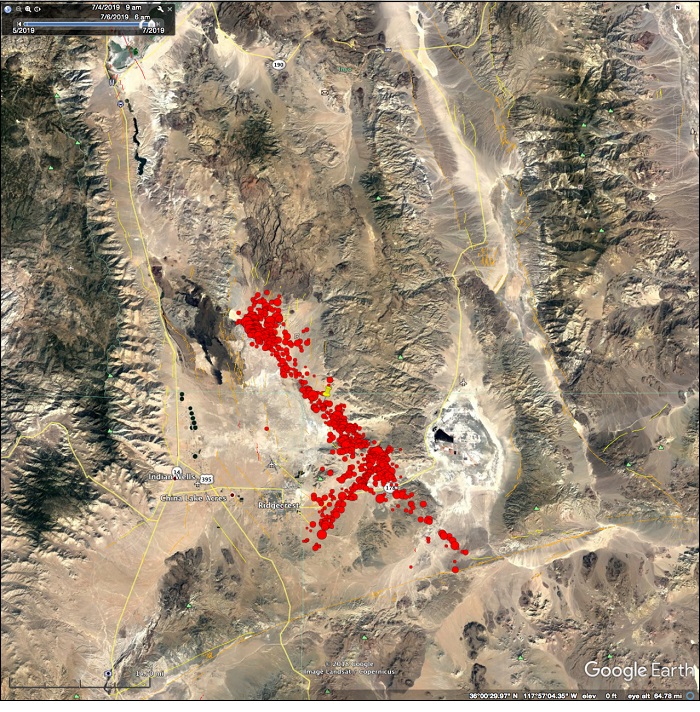
|
|

|
|
| April 26, 2024 |
|
Aftershocks become ‘real time’ laboratory for determining what’s next 
RIDGECREST – (INT) – Scientists expect to better understand earthquakes with the ongoing aftershock sequence that followed the twin jolts where the North American and Pacific tectonic plates meet beneath the Mojave Desert.
Aftershocks are occurring over about a 37-mile length stopping just short of the Coso geothermal field. The scientific field teams are closely monitoring the Coso field and have found no evidence of magmatic activity and no changes in steam production. The southern end of the rupture zone extends to the Garlock fault where some quakes are occurring. The fault zones that caused the recent earthquakes are complex, and whether they might affect the Garlock, San Andreas, or other regional fault systems is uncertain, according to the US Geological Survey (USGS). “We have few big earthquakes and we learn something from each one,” said Keith Knudsen, USGS Earthquake Science Center deputy director. “Events like these are an important opportunity to document what happens and could potentially happen in the future.” The field mapping and seismological work will continue from weeks to months as scientists analyze the collected data. Story Date: August 5, 2019
|